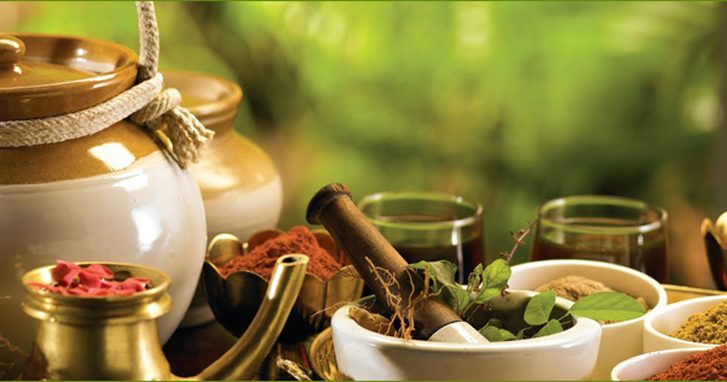Ayurvedic Medicine is one of the oldest systems of medicine in the world and was originally practiced in India. While many of the practices and techniques of this alternative form of healing were documented, several techniques and therapies were handed down by word of mouth. Two main textbooks of Ayurvedic Medicine, titled the Caraka Samhita and the Sushruta Samhita describe the eight branches of this alternative form of medicine and cover the followings: Internal medicine, surgery, treatment of head and neck disease, gynecology and pediatrics, toxicology, psychiatry, elder rejuvenation and sexual vitality.
Ayurvedic herbs and treatments are continually used in India where over 80% of its population relies on Ayurvedic medicine. With several underlying concepts that include the treatment of a person’s mind, body and soul, this alternative medicine is geared to balance the body and eliminate impurities that affect the health.
Ayurvedic medicine offers over 600 herbal formulas and 250 plants that contain curative properties. At times these herbal remedies will be combined with metals to make naturally occurring substances, later to be used as an ayurvedic medicine for piles.
Piles, more commonly referred to as hemorrhoids, is a condition where blood vessels in the anus, as well as in the lower part of the large intestines, are enlarged and are subject to bleeding. While the causes of this condition are generally due to poor diet, long periods of sitting and lack of exercise, there are herbal, alternative forms of therapies that are used in a holistic manner to cure this condition. Ayurvedic remedies include triphalachurna, abhayarista and Arsha Harivati, to name a few.
The ayurvedic treatment triphalachurna should be taken for piles on a daily basis for sufferers with constipation. The medicine is designed to alleviate constipation by mixing 2 tablespoons of powder in a lukewarm glass of water to be taken nightly just before bedtime. By ingesting this medicine, the pressure caused by constipation will be lessened and the hemorrhoids gone. Ingesting 30 ml of Abhayarista, an oral liquid, is also helpful for constipation. To hasten recovery, Triphalachurna can be added to a bathtub, filled with warm water, where the patient sits for at least 30 minutes.
In Ayurvedic medicine, diabetes is classified as a metabolic disorder where diminished functioning of the pancreas leads to higher levels of blood sugar. Just like when treating any ailment, the particular body type of the patient – VATA, Pitta or Kapha – is considered when treating diabetes. Practitioners offering Ayurvedic treatment attack the disorder from several different fronts: Diet modification, a cleansing program referred to as Panchakarma, and ayurvedic medicines for diabetes will be used throughout the treatment. The most important herbs used in this treatment are shilajit, gudmar turmeric, neem, amalaki, guggul and arjuna. Each herbal medicine will play its own part in regulating pancreas and liver functions.
Each herb will be used in a different fashion a number of times per day. Some of the herbs will be added to various fruit juices or water, while others will be ingested in a form of capsules or rubbed on the body in a form of herbal paste.
While there are several over-the-counter and prescribed cough and cold medicines on the market, some prefer to take a natural approach in treating their ailments. Ayurvedic medicine provides many natural remedies for sufferers of colds and coughs. These medicines include boiled vegetables, teas, hot milk with ginger and milk with turmeric. These medicinal, curative, drinks help activate the body’s immune system, remove mucus from the body, which in turn alleviate the cough symptoms


